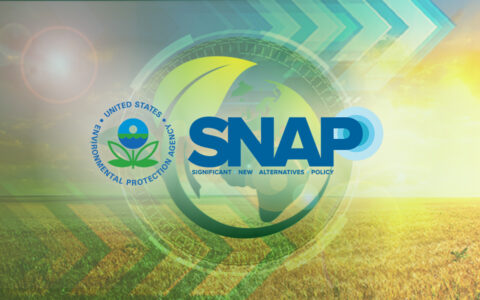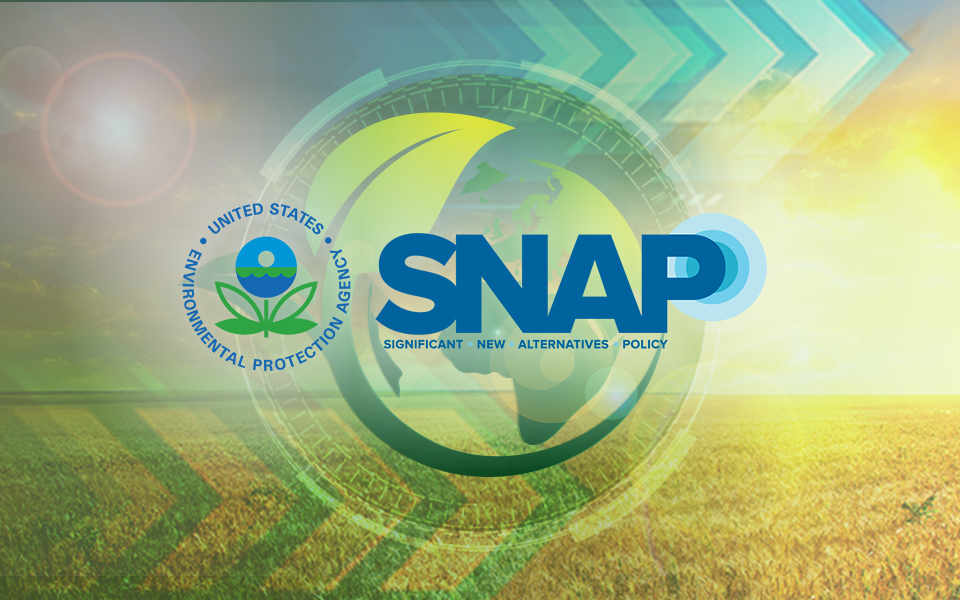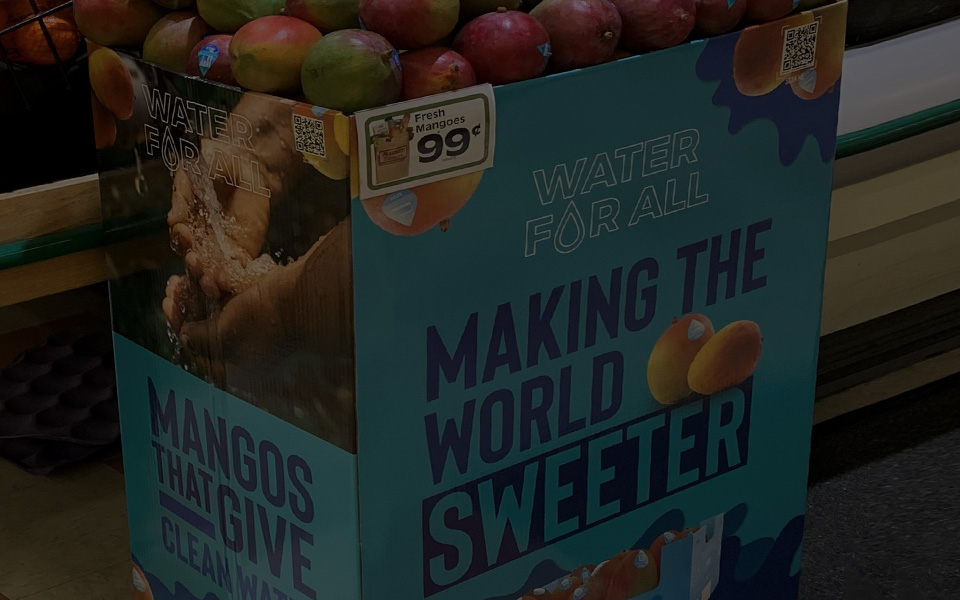A2L Refrigerants and Higher R-290 Charges Listed in Proposed SNAP Rule 26

*Emerson’s Climate Technologies business is now a new standalone company – Copeland. Building on more than a century of HVACR innovation and industry leadership, Copeland will continue to offer the same products you’ve grown to trust while renewing our commitment and investment in the development of next-generation technologies.
On May 3, the Environmental Protection Agency (EPA) — under its Significant New Alternatives Policy (SNAP) Program — proposed SNAP Rule 26, which includes new listings and use conditions for flammable refrigerants used in commercial and industrial refrigeration. In alignment with the sector-based global warming potential (GWP) limits proposed in the EPA’s recent Technology Transitions Rule, the proposed SNAP Rule 26 lists several new lower-flammability A2L refrigerants as acceptable and introduces modified use conditions for R-290 (propane) that would permit larger charges in certain refrigeration end uses.

The proposed SNAP Rule 26 — which has been anticipated eagerly by HVACR industry stakeholders — is a necessary step for the EPA to achieve its goal of phasing down the supply and demand of high-GWP hydrofluorocarbon (HFC) refrigerants. In 2020, the passing of the American Innovation & Manufacturing Act (AIM Act) authorized the EPA to mandate HFC supply restrictions and establish sector-based GWP limits. To fulfill this mandate, new lower-GWP refrigerant substitutes must continue to be by the EPA.
Like all previous EPA SNAP rulings, the proposed SNAP Rule 26 lists new refrigerant substitutes according to a comparative risk framework defined under Section 612 of the Clean Air Act (CAA). Refrigerants are evaluated in specific end uses and listed as “acceptable, subject to use conditions” to specify the conditions which must be met when using the substitute to minimize risks to human health and the environment. These use conditions are consistent with the most recent product safety standards governing the use of flammable refrigerants, including:
- Underwriters Laboratory (UL) 60335-2-89, 2nd edition product standard
- American Society of Heating, Refrigerating, and Air-Conditioning Engineers (ASHRAE) 15 application standard, 2022 edition
Summary of proposed SNAP Rule 26
Under the proposed SNAP Rule 26, the EPA has listed the following A2L refrigerants as acceptable in certain end uses, subject to use conditions: HFC-32, HFO-1234yf, R-454A, R-454B, R-454C, R-455A, R-457A, R-516A and HFO-1234ze(E). These lower-GWP A2Ls — which are designed to be substitutes for legacy HFCs such as R-404A and R-134a — are approved for a wide range of end uses, including: commercial ice machines, stand-alone units, supermarket systems, remote condensing units, and refrigerated food processing and dispensing equipment.

The newly listed A2L refrigerants come in various GWP ratings to provide a full range of options for appropriate end uses — from below 150 GWP to below 700 GWP — per the GWP limits established in the EPA’s Technology Transitions proposal.
- Below 150 GWP: HFO-1234yf, HFO-1234ze(E), R-454C, R-455A, R-457A, R-516A
- Below 300 GWP: R-454A
- Below 700 GWP: R-454B, HFC-32
Note that per SNAP Rule 26, R-454B and HFC-32 are only allowed for use in industrial process chillers, which have a 700 GWP limit per the Technology Transitions proposal. R-454A has been proposed for use in chillers, remote applications with less than 200 pounds of charge, and the high-temperature side of cascade systems.
SNAP Rule 21 (from December 2016) listed the A3 R-290 as acceptable for use in new self-contained commercial ice machines and stand-alone equipment with a 150g charge limit. In the proposed SNAP Rule 26, R-290 has been listed as acceptable, subject to use conditions in new refrigerated food processing and dispensing equipment (see chart above). Within SNAP Rule 26, the EPA has also proposed modifying R-290 charge limits — from 300–500g — in its previously approved end uses.

Updated charge limits
Charge limits for the flammable A2L and A3 refrigerants listed in the proposed SNAP Rule 26 are based on safety requirements defined in UL 60335-2-89, 2nd edition. For stand-alone units, charge limits are based on whether the unit has a closed-door (or drawer) or open design. Stand-alone A2L equipment charge limits are calculated as follows:
- m1= 8 m3 × LFL for closed-door (or drawer) designs
- m1= 13 m3 × LFL for open-style designs (without doors or drawers)
Using R-454C as an example — with an LFL of 0.291 kg/m3 — the refrigerant charges in closed and open cases would be as follows:
- 1 lb. of R-454C in a closed case
- 3 lbs. of R-454C in an open case
For stand-alone R-290 equipment, charge limits would be raised from 150g to 300–500g, again based on whether units have an open or closed design:
- 300g maximum charge limit in closed appliances (with doors or drawers)
- 500g maximum charge limit in open appliances (without doors)
Higher R-290 charge limits will help to increase system capacities while capitalizing on R-290’s high efficiency and low GWP rating (GWP = 3).
In remote and/or field erected systems, UL 60335-2-89, 2nd edition provides guidance on how to calculate A2L charge limits, where charge limits are proportionate to the application size and/or cooling requirements and require different mitigation strategies based on charge:
- m2= 52 m3 × LFL
- m3= 260 m3 × LFL
Using R-454C as an example, the maximum allowable charge size would be 76.2 kg (166 lbs.) and deliver up to 50–60 HP of cooling capacity.
Currently, the proposed SNAP Rule 26 has not been published in the Federal Register. Once it is published, industry stakeholders will have 45 days to submit comments at www.regulations.gov, Docket Number EPA-HQ-OAR-2023-0043.
To prepare for the imminent approval and wider adoption of A2L refrigerants in commercial refrigeration applications, Emerson is developing the next generation of A2L-qualified Copeland™ compression technologies using the following, recently listed refrigerants: R-455A (146 GWP), R-454C (148 GWP) and R-454A (238 GWP). Emerson has qualified electronic componentry for use with these A2Ls, including onboard compressor protection, variable frequency drives (VFDs) and contactors. Combined with leak detection sensors and supervisory control architectures, our full A2L component portfolio reflects our commitment to maximizing A2L application safety and refrigeration reliability.

Six Ways to Reduce Food Waste by Tracking the Supply Chain
by Gerd Uitdewilligen | Cold Chain
*Emerson’s Climate Technologies business is now a new standalone company: Copeland. Over the next...

Protect Valuable Shipments in High-Crime Areas
by Lissandra Rodriguez | Cold Chain
*Emerson’s Climate Technologies business is now a new standalone company: Copeland. Over the next...

Real-time Tracking Protects Valuable Mango Cargo
by Andres Toro | Cold Chain
*Emerson’s Climate Technologies business is now a new standalone company: Copeland. Over the next...
The post A2L Refrigerants and Higher R-290 Charges Listed in Proposed SNAP Rule 26 appeared first on Copeland.